Frutiger Aero Aesthetic
Frutiger Aero, also referred to as Web 2.0 Gloss (often mistakenly called ‘Fruitiger Aero’ or ‘Fruitger Aero’), was a widespread design style that dominated various fields, including advertising, media, stock imagery, and technology, from approximately 2004 to 2013. Emerging after the Y2K aesthetic, Frutiger Aero is distinguished by its extensive use of skeuomorphism, glossy textures, vibrant color palettes (especially greens and blues), and nature-inspired elements such as cloudy skies, tropical fish, water, and bubbles. The aesthetic also features lens flares, bokeh effects, Abstract Tech patterns, aurora-inspired gradients, and the frequent use of the Frutiger typeface.
Enter the Frutiger Aero realm and discover everything about this aesthetic on frutiger-aero.org.
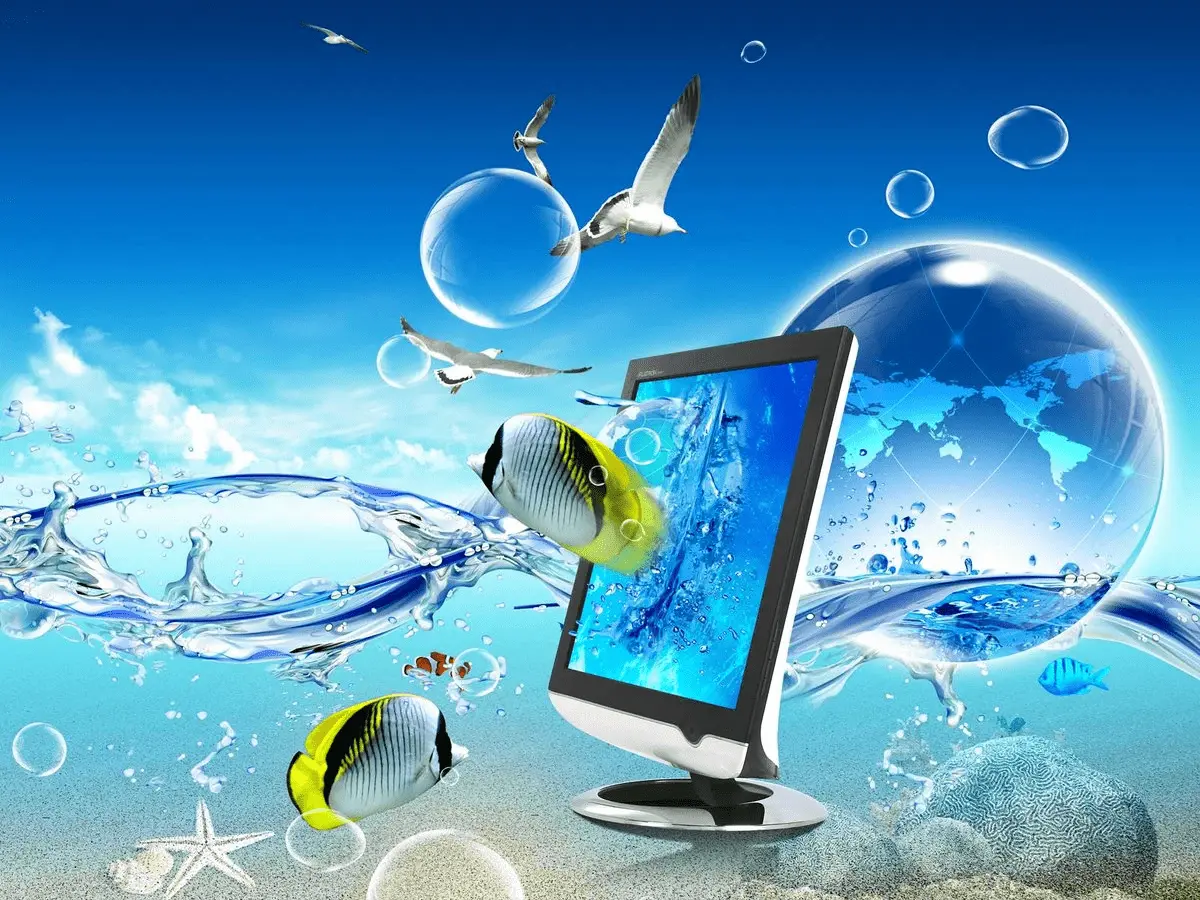
Initially, this design style lacked a specific name and was more closely associated with individual styles (e.g., Windows Aero, iOS's skeuomorphic icons, and the visuals of Mirror's Edge and Spore) rather than a broader aesthetic category. During its peak, some referred to it as "Web 2.0 Gloss," but this term primarily described glossy interface elements rather than the overall aesthetic. The term "Frutiger Aero" was introduced in 2017 by Sofi Lee of the Consumer Aesthetics Research Institute and gained significant traction in 2022, leading to a renewed interest in the aesthetic.

Frutiger Aero encompasses a variety of sub-aesthetics and related aesthetics, such as Frutiger Metro, Technozen, Frutiger Eco, and Helvetica Aqua Aero. The name "Frutiger Aero" is derived from two key influences: the Frutiger typeface, created by Adrian Frutiger and commonly used in Frutiger Aero designs, and the Windows Aero interface, introduced in Windows Vista and Windows 7, which played a significant role in popularizing the aesthetic's glossy, translucent appearance.
The Development and Progression of Frutiger Aero
Early Influences (2001-2004)
The origins of Frutiger Aero can be traced back to the early builds of Microsoft's Windows Longhorn (later released as Windows Vista) and the skeuomorphic design language of Mac OS X, which drew inspiration from early versions of iMovie. As the world transitioned from the Y2K era, marked by events such as the Dot-com Bubble Burst, the September 11th Attacks, and the War on Terror, Frutiger Aero began to emerge as a fresh, optimistic design language that reflected the changing cultural landscape of the early 2000s.
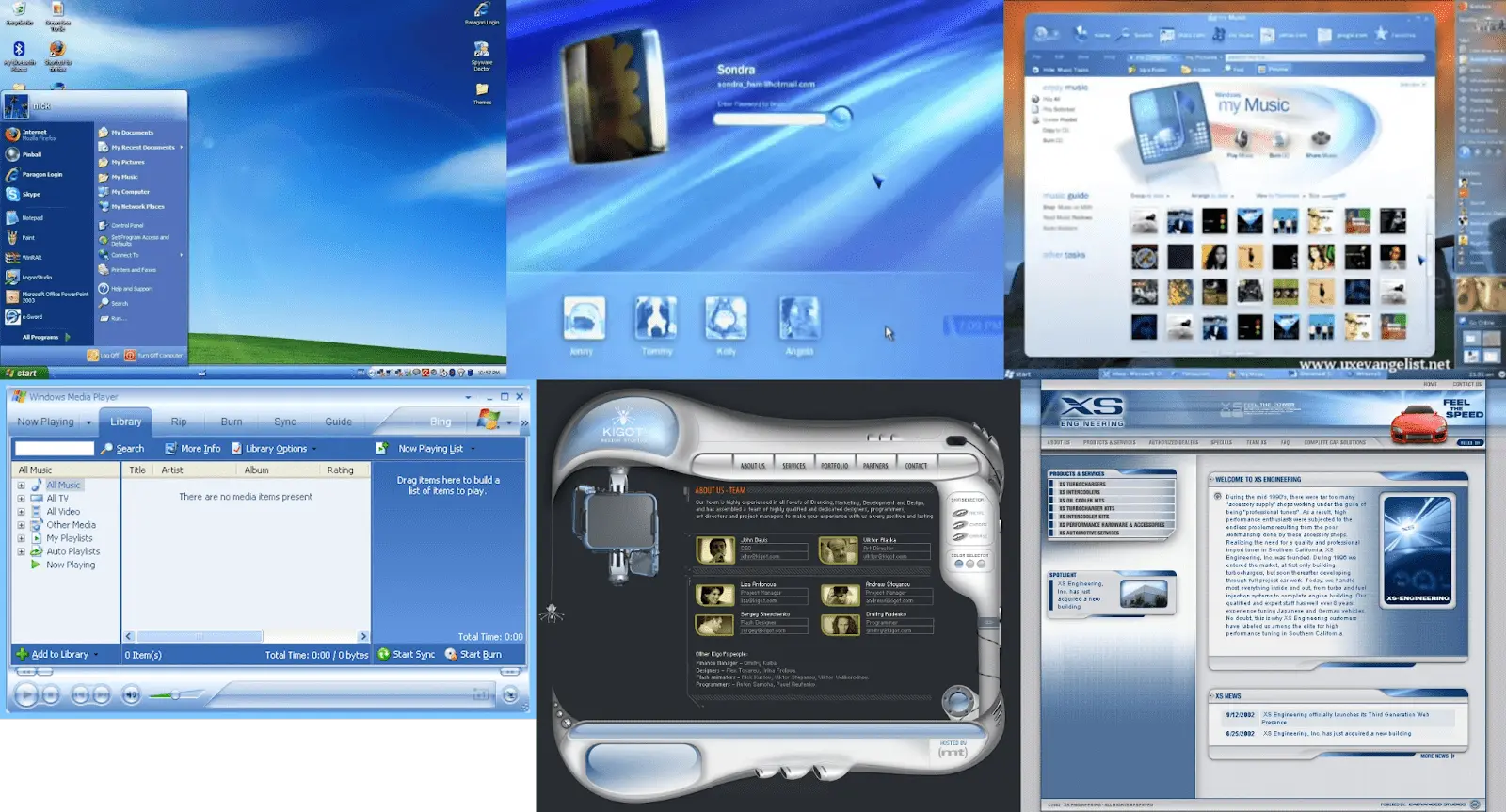
Widespread Adoption (2004-2007)
Frutiger Aero gained significant recognition and adoption starting in late 2004, with the release of Windows Media Player 10, the Seventh Generation of Video Game Consoles (including the PlayStation Portable and its XrossMediaBar interface), Apple's iconic iPod "Silhouette" advertising campaign (Funky Seasons), and the rise of Web 2.0 design trends.
The aesthetic's popularity continued to grow in 2005 and 2006, with the release of Windows XP Media Center Edition 2005, Longhorn Build 5048 (the first build with a fully Aero-enabled UI), Windows Vista Beta 1, the Xbox 360 (with its Blades Dashboard), Nintendo DS Lite, PlayStation 3, and Nintendo Wii. By 2007, with the launch of Windows Vista, the first-generation iPhone (running iPhone OS 1.0), and Mac OS X Leopard (10.5), Frutiger Aero had firmly established itself as the dominant design aesthetic of the era.

The Pinnacle of Influence (2007-2012)
From 2007 to 2012, Frutiger Aero reached its zenith of influence, permeating nearly every aspect of visual culture. The aesthetic served as a more refined, corporate-friendly evolution of the Y2K aesthetic, featuring similar bright, glossy, and futuristic elements. During this period, Frutiger Aero also intersected with other popular aesthetics, such as McBling, Surf Crush, and ElectroPop 08, leading to the emergence of various sub-aesthetics under the ever-expanding Frutiger Umbrella.
Waning Popularity and Resurgence (2012-present)
The rise of Flat Design in the early 2010s marked the beginning of Frutiger Aero's decline. In 2012, the skeuomorphic look of Frutiger Aero (as seen in Windows 7) started to fade in favor of the Flat Design look (as exemplified by Windows 8 and Windows 10). Nintendo's Wii U (2012) was the last video game console to fully embrace Frutiger Aero, but its commercial failure further contributed to the aesthetic's decline.
By 2013, with the release of iOS 7 and the growing popularity of minimalist design trends, Frutiger Aero had largely fallen out of favor. The emergence of Corporate Memphis in 2017 further solidified the shift away from Frutiger Aero's skeuomorphic, glossy style. However, the aesthetic has experienced a resurgence in recent years, driven by nostalgia and a growing appreciation for its unique visual language. The hashtag #frutigeraero has garnered over 30 million views on TikTok, and even Microsoft has acknowledged the aesthetic's legacy in a TikTok post on their official account.
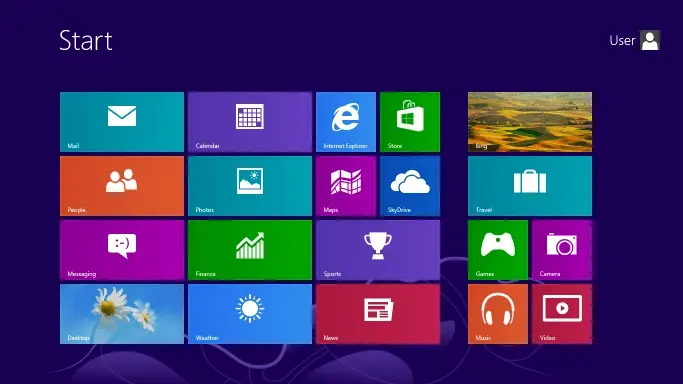
Revival and Neo-Aero (2022-present)
The term "Frutiger Aero" was coined by Sofi Lee of the Consumer Aesthetics Research Institute in 2017, leading to a gradual increase in interest in the aesthetic. Since late 2022, it has experienced a revival through TikTok videos driven by nostalgia, with the hashtag #frutigeraero being used over 30 million times, and on Reddit with the subreddit r/FrutigerAero that has more than 50,000 members.

In August 2023, a TikTok post specifically about the aesthetic was shared on the official Windows TikTok account. Furthermore, some believe Windows 11 is related to Frutiger Aero or contains a successor-aesthetic (Glassmorphism), as evident in promotional materials. On Ukrainian Wikipedia, a comprehensive article has appeared describing Frutiger Aero, including its history, visuals, and list of uses. In the "Legacy" section of the Windows Aero Wikipedia article, Frutiger Aero is recognized as having existed, featuring a brief description of the aesthetic's visuals and history.
Aero's revival mirrors the Y2K resurgence, a trend that has been ongoing since the mid-late 2010s. Given this Neo-Y2K phenomenon, it is plausible that a "Neo-Aero" movement is currently underway or will emerge in the future, exemplifying the "20-year nostalgia cycle" as Frutiger Aero began triggering mass nostalgia approximately 18 years after its emergence.
Essential Visual Characteristics
Frutiger Aero user interfaces often incorporate linear gradients, bloom and glow effects, and a glossy sheen on many elements to create a sense of depth and realism. At first glance, Frutiger Aero visuals can be mistaken for the Y2K aesthetic, but the primary difference lies in the higher-definition visuals and more sophisticated 3D graphics compared to most Y2K imagery (largely due to Frutiger Aero emerging just as HD video began to gain popularity).
Frutiger Aero visuals somewhat lack the "anything goes" mentality often associated with the Y2K aesthetic (e.g., the "Green Head" of Windows ME's Media Player), opting for a more refined look. The Frutiger Aero aesthetic is often considered the "halfway point" between the busyness of the Y2K era and the minimalism of the Flat Design/Corporate Memphis era.
Common motifs associated with Frutiger Aero include skeuomorphism, glossy textures, "humanism," nature-inspired elements, bokeh, bubbles, Frutiger fonts, glass, and auroras. Some Frutiger Aero designs prominently feature the color blue to mimic the ocean or to resemble Abstract Tech, while others adopt a green, more nature-oriented approach.
Sub-Aesthetics and Related Styles
The Frutiger era encompassed the zeitgeist from the mid-2000s (2004) to the early 2010s (2013). Frutiger Aero and its related aesthetics and subgenres dominated advertising, stock imagery, technology, web design, branding, and media during its mainstream period. The Frutiger era succeeded the Y2K era and preceded the Flat Design era, often considered the middle ground between the two. Frutiger Aero itself is increasingly broad, leading the internet to assign subcategories to better understand its intricacies.
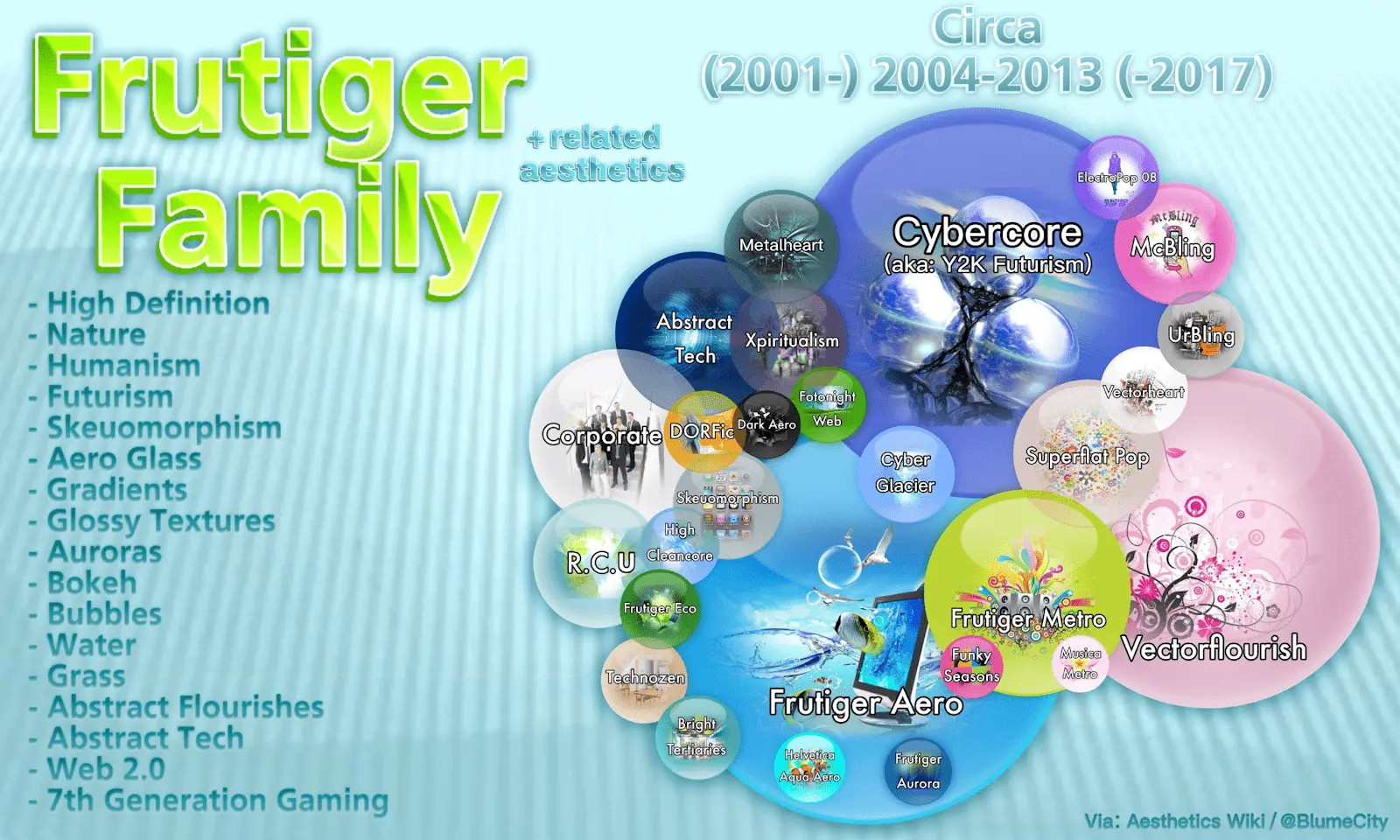
Sub-Aesthetics
Frutiger Eco

Frutiger Eco is a broad sub-aesthetic of Frutiger Aero that focuses on renewable energy, living in harmony with nature, and incorporating futuristic themes and architecture centered around sustainability. It was prevalent in images, advertising, and graphic design of the mid-2000s and early 2010s, aiming to raise awareness of climate change while encouraging optimism through visuals portraying an eco-friendly and advanced utopian future.
Helvetica Aqua Aero
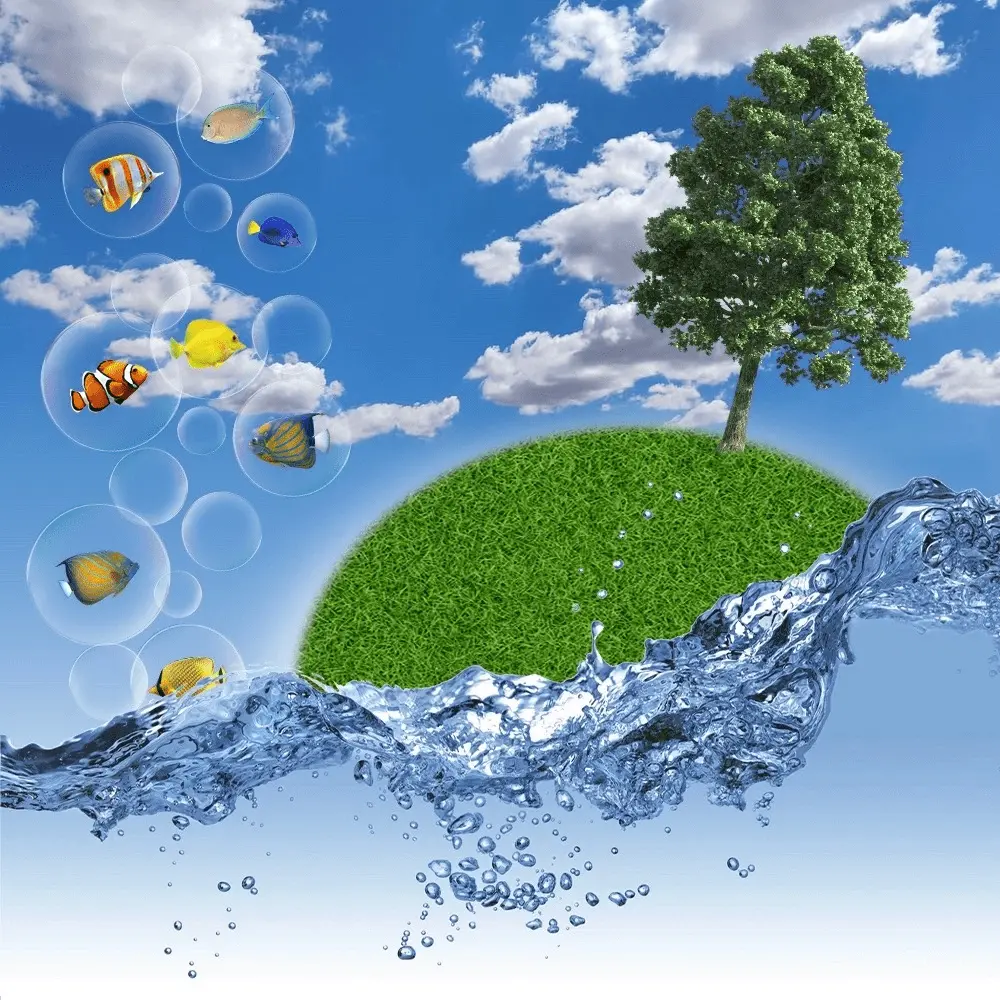
Helvetica Aqua Aero (also known as Frutiger Aqua, Aquacore, Low Frutiger, or simply Helvetica Aqua) is a Frutiger Aero and Y2K sub-aesthetic characterized by its use of imagery related to the sea, the ocean, and beaches. It combines aquatic elements with shared aspects of Y2K and Frutiger Aero, such as gloss, futurism, 3D rendered objects, early 2000s imagery, and gradients. Due to this, it is considered the halfway point between Y2K (1997-2004) and Frutiger Aero (2004-2013).
Frutiger Aurora
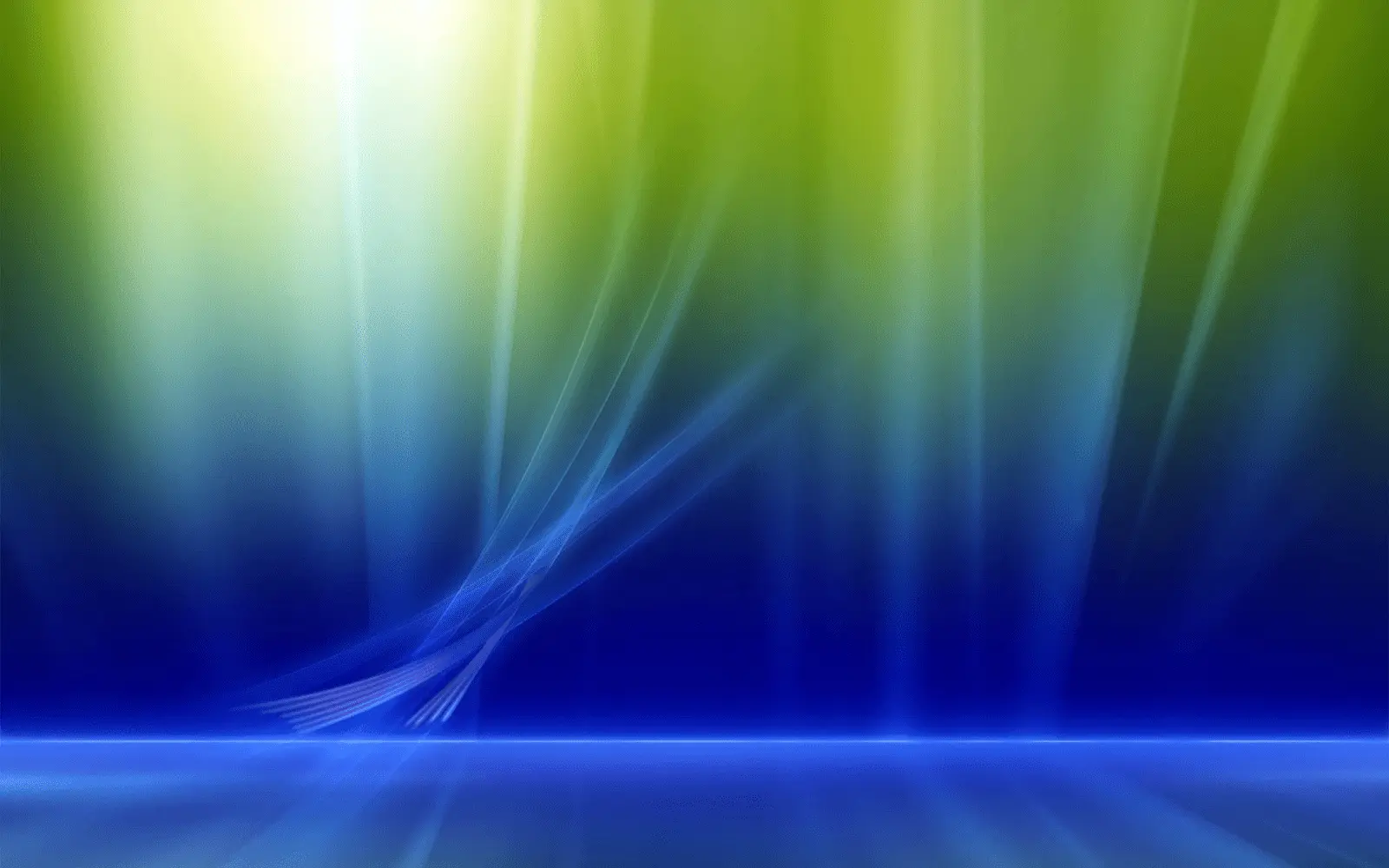
Frutiger Aurora is a subgenre of Frutiger Aero that focuses on the aurora visual—a natural light display in Earth's sky, predominantly seen in high-latitude regions around the Arctic and Antarctic. Frutiger Aurora emerged in the early 2000s towards the end of the Y2K era and maintained its popularity into the early 2010s.
Dark Aero
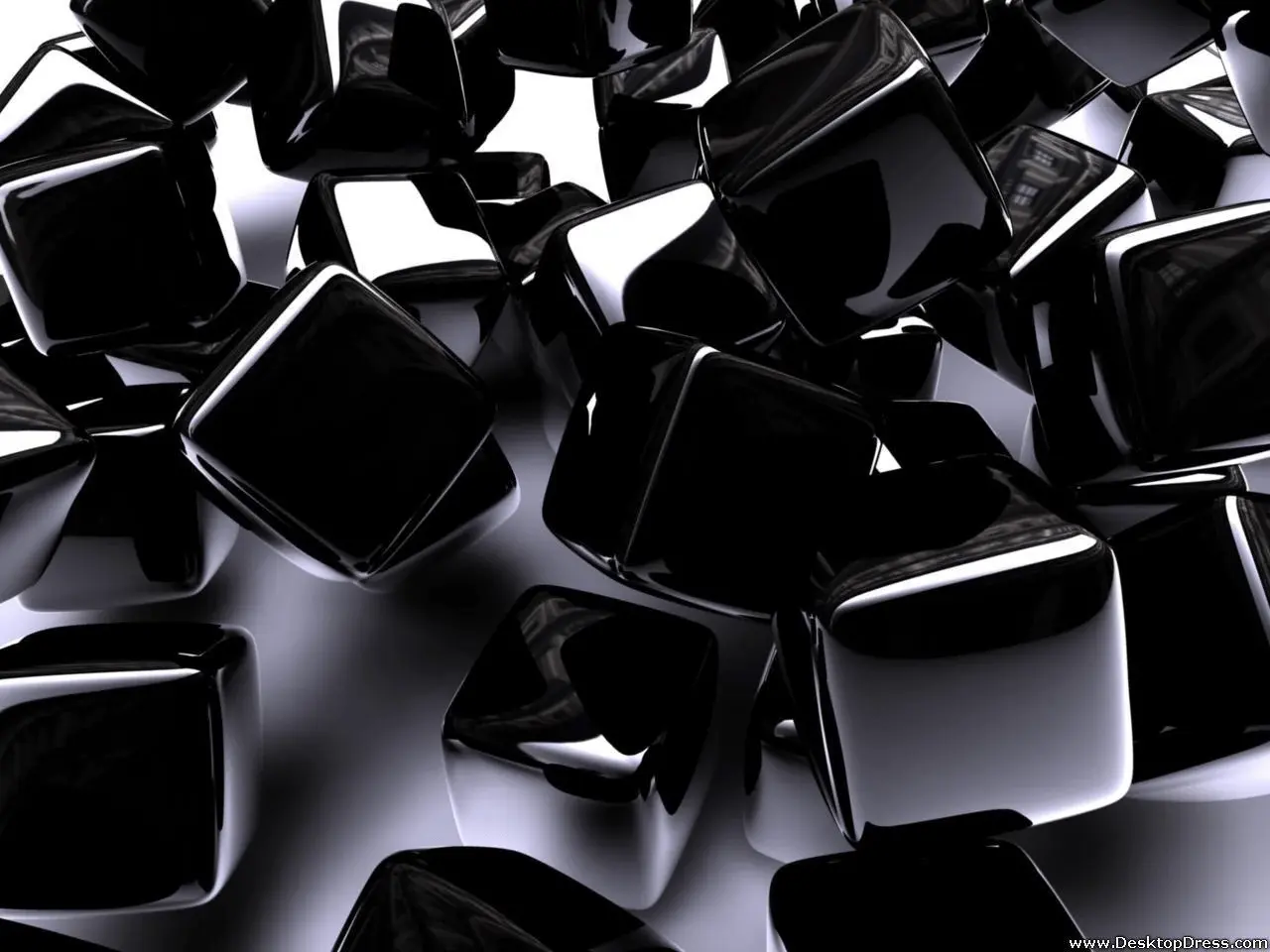
Dark Aero, also known as Mata Nero or Frutiger Ego, is a sub-genre of Frutiger Aero popular from around 2006 to 2015. Dark Aero employs a darker color palette, contrasting the depth-filled, colorful motifs characteristic of Frutiger Aero, resulting in a more simplistic look that persisted even after Frutiger Aero's decline. Another signature characteristic of Dark Aero is aero glass.
Technozen
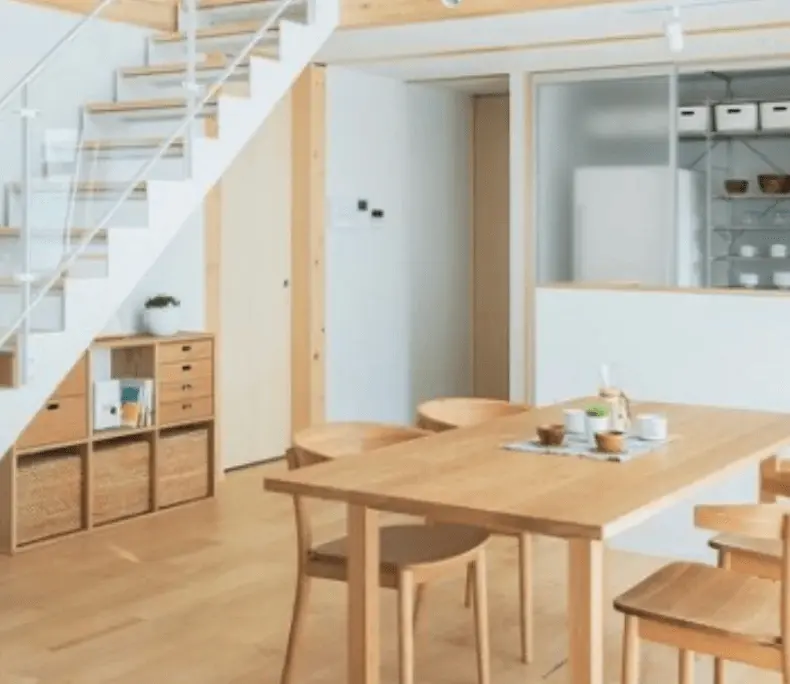
Technozen (also known as Techno Kawaii Zen, or alternatively Yuki) is an aesthetic primarily inspired by the aesthetics of mid/late-2000s Japanese technology. It can be described as cold, sterile, and professional-looking, while simultaneously being cozy, friendly, and cute. Technozen is the Japanese counterpart of Frutiger Aero and is considered a sub-aesthetic of it, although Technozen is largely evocative of Asian design while Frutiger Aero is more global.
Funky Seasons
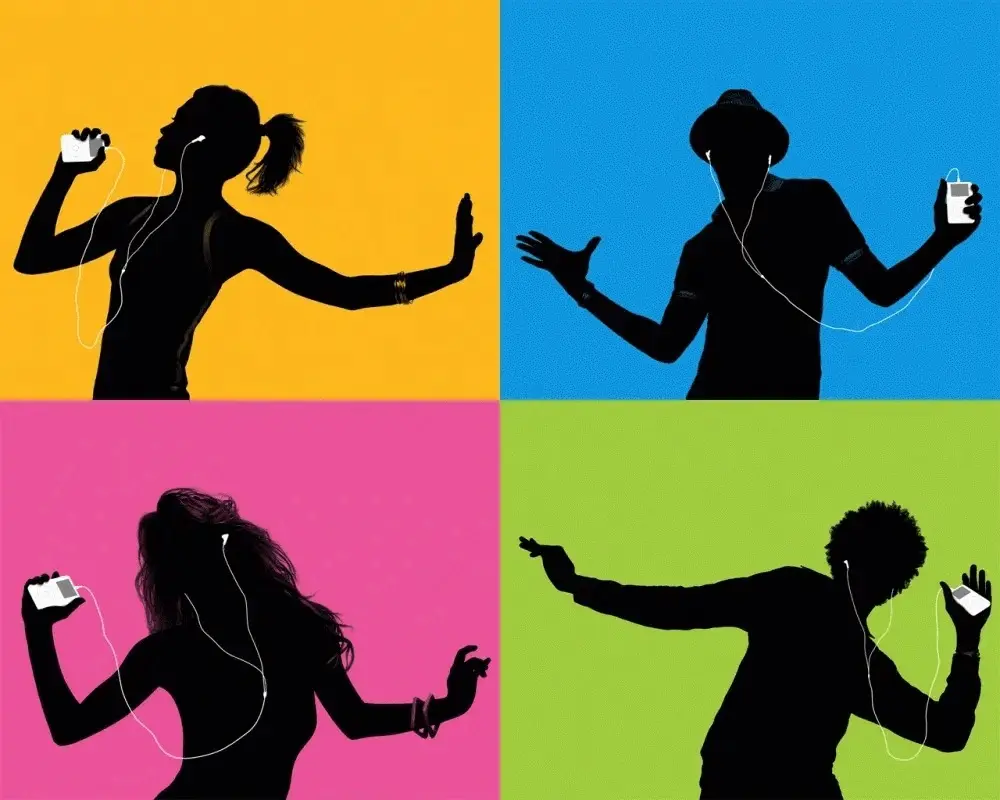
Funky Seasons (also known as Four Colors) was a frequently used color scheme found in consumer products and technology during the mid-2000s to the early 2010s, first primarily seen around 2004 as part of Apple's iPod "Silhouette" advertising campaign. It is a subgenre of Superflat Pop and Frutiger Aero, prominently consisting of electric lime, sky blue, hot pink, and neon orange.
DORFic
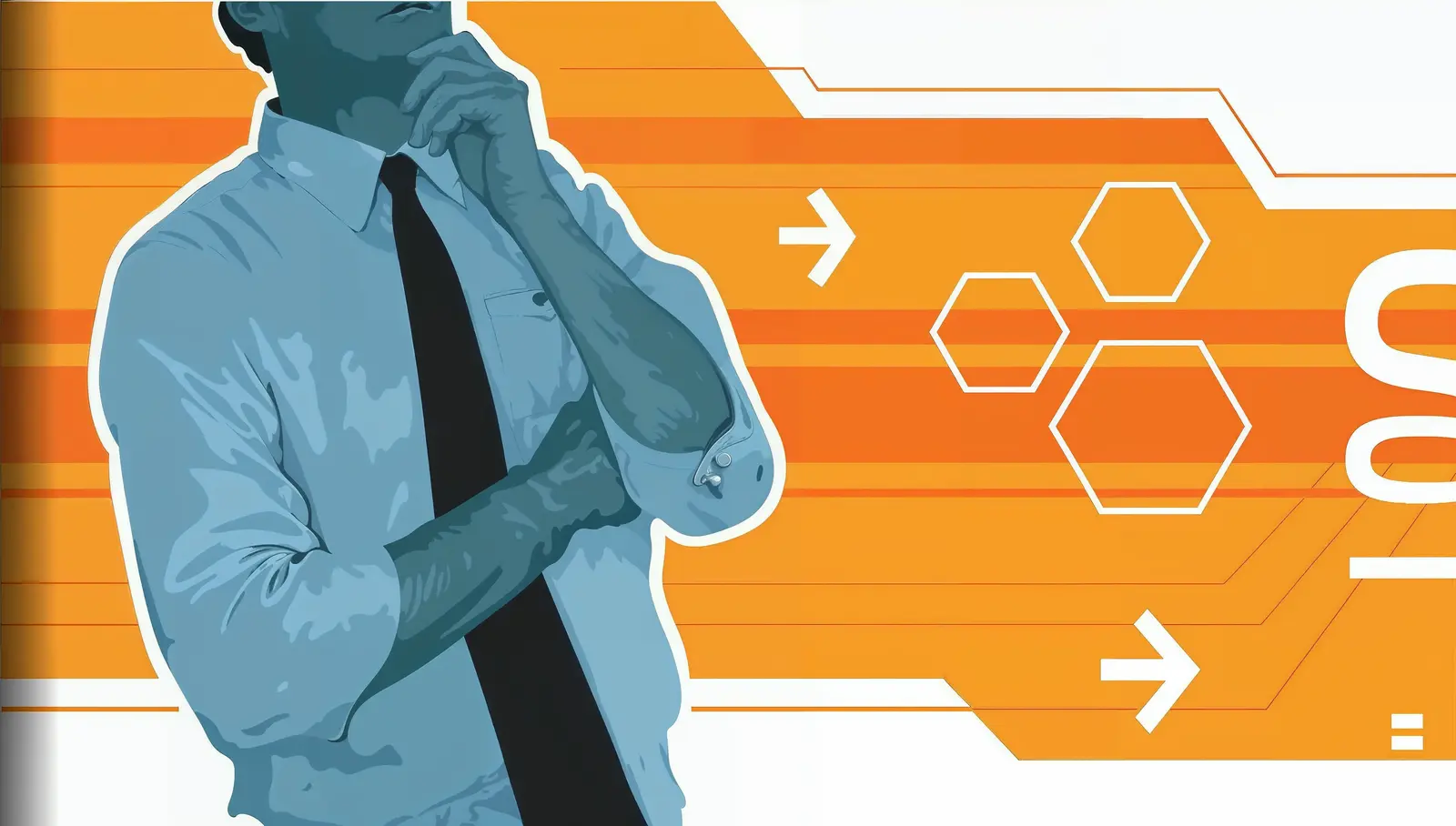
DORFic (also known as Sunshine Polypunk or PolySunk) is an aesthetic featuring Abstract Tech-esque minimalist imagery that was popular from the mid/late-2000s to the mid-2010s. DORFic is an acronym for daylight, orange, futurism, and the last four letters of the word "graphic" (simplified to "Fic"). This aesthetic is a subgenre of Frutiger Aero and Abstract Tech, and can be compared to Stecffism (Frutiger Eco subgenre) due to their shared corporate elements.
Vectorgarden

Vectorgarden (formerly known as Floral Metro) is a subgenre of Vectorflourish, Frutiger Aero, and Frutiger Metro. It is characterized by minimalist abstract flourish patterns, flowers, auroras, butterflies, bubbles, and the heavy use of gradients, transparent, and glossy textures. Vectorgarden was popular between the mid-2000s and early 2010s, sharing significant overlap with Frutiger Aero due to their shared visual motifs such as humanism, nature, auroras, and glossy textures.
Related Aesthetics
Bright Tertiaries
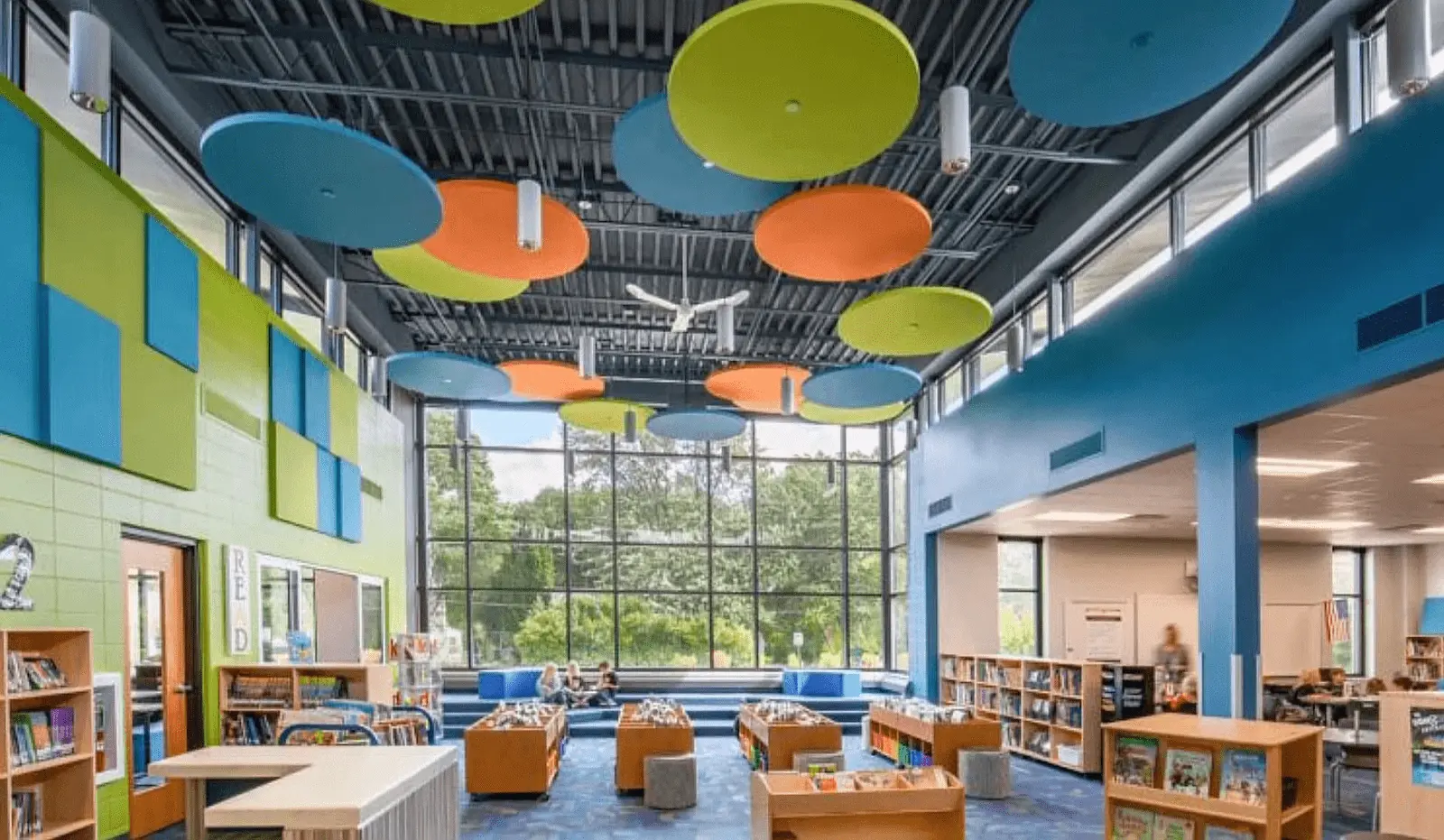
Bright Tertiaries is a broad aesthetic, graphic design style, and interior design style originating in the mid-2000s alongside contemporary and visually similar aesthetics such as Frutiger Aero, Frutiger Metro, and Funky Seasons. It was utilized for various purposes, predominantly by corporations, and was incredibly popular during its era. Bright Tertiaries is primarily centered around a tertiary color palette of lime green, fuchsia, orange, and teal.
Frutiger Metro
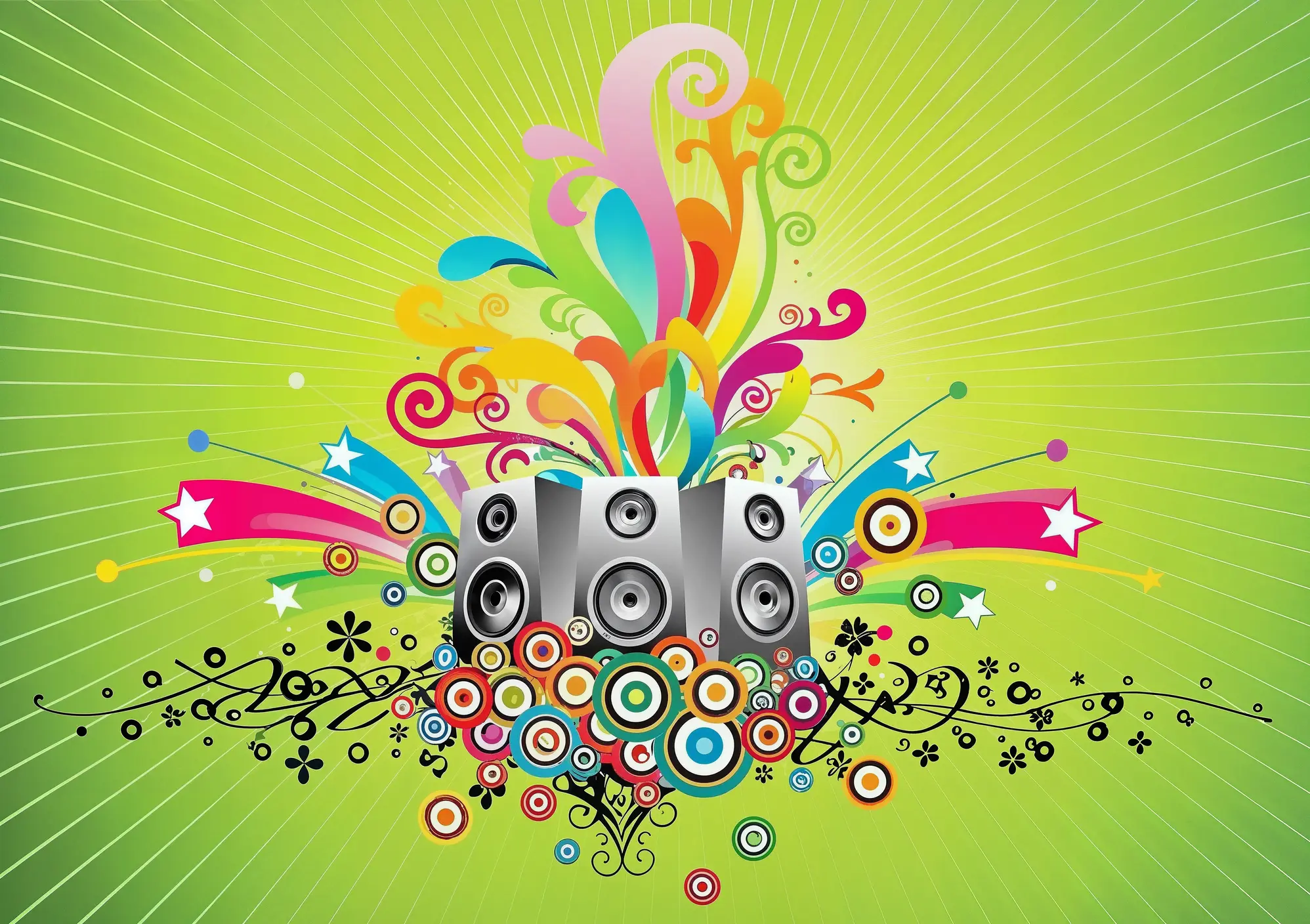
Frutiger Metro (also known as Flat Frutiger Aero, Vector Metro, or Vector Vomit) is a broad aesthetic that encompasses the "Frutiger" vector-based graphic designs of the 2000s. These designs share many similarities with Frutiger Aero and other aesthetics of the time. Unlike Frutiger Aero, which contains large amounts of depth and texture, Frutiger Metro is flat. Its name is derived from its cousin-aesthetic, Frutiger Aero, and the Metro design language created by Microsoft, which was utilized in Windows 8 (Frutiger Metro's most prominent appearance).
Frutiger Aero's Presence in Popular Culture
Unlike the Y2K aesthetic of the late 1990s and early 2000s, which heavily influenced science-fiction movies, TV shows, music, and video games, there was less overlap between Frutiger Aero and popular culture. It was and remains primarily a corporate design philosophy. The Hexatron aesthetic, with its focus on dark surfaces, UI, and a strong emphasis on the color blue, eventually edged out Frutiger Aero to become more popular.
Video Games and Gaming Platforms
Due to its bright and minimal design, Frutiger Aero was heavily used in casual video games such as Wii Play and Purble Place. Portal, Mirror's Edge, Spore, and The Sims 2 & 3 are notable and popular examples of the aesthetic in the AAA gaming world (the latter three being published by Electronic Arts). Engines like Unreal Engine (used in Mirror's Edge) and the Source Engine (used to create Half-Life 2, Portal, Garry's Mod, TF2, etc.) frequently employed design elements similar to Frutiger Aero.
With the comeback of Frutiger Aero in 2024, a game on Roblox called Frutiger Aero Tower was created, reflecting this renewed interest.
Ads and commercials
Fashion & Accessories
There is no 'official' Frutiger Aero fashion, although some creators on Pinterest and TikTok are trying to revive the aesthetic by wearing Frutiger Aero clothing, characterized by green, white, and blue colors.
The Frutiger Aero soap from Palmolive or Softsoap is also a sought-after accessory among Frutiger Aero enthusiasts.
Internet Fiction and Literature
Elements of Frutiger Aero are scattered throughout internet fiction as well. For example, the Zoeific Biopolity from Orion's Arm does not have one specific aesthetic, given that many trillions of people live in it, but its logo could be considered Frutiger Aero. It is an authoritarian surveillance capitalist empire based on environmentalism and 2000s-era right-wing ideologies.
Another example is Homestuck's Jade Harley, a character who likes nature and technology, similar to Frutiger Aero's core philosophy.
Technology and User Interfaces
This aesthetic was used in the technology and visual design of the time and is often associated with iOS 1 to 6 and the early days of Web 2.0.
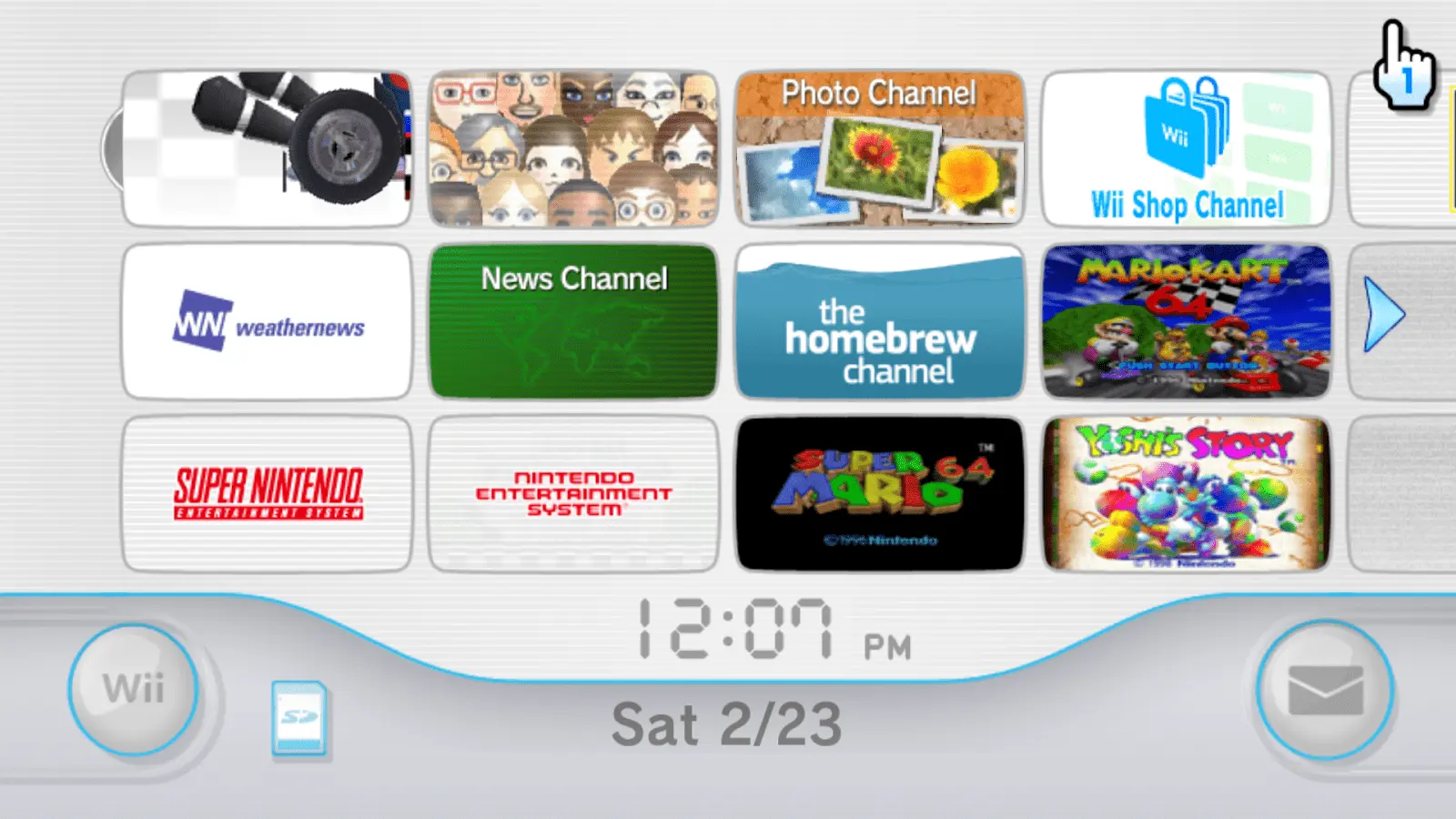
- PlayStation Portable (2004-2011)
- Xbox 360 (2005-2013)
- Gizmondo (2005-2006)
- Nintendo DS Lite (2006)
- PlayStation 3 (2006-2017)
- Wii (2006-2017)
- Intel-based iMac (2006-2020)
- Windows Vista (2007-2017)
- Windows Mobile 6.0-6.5 (2007-2009)
- LG Smart TV "NetCast" operating system (2007-2014)
- iOS 1-6 (2007-2014)
- iPhone (1st generation) - iPhone 4S (2007-2011)
- Mac OS X 10.5-10.9 (2007-2013)
- PlayStation 2 Super Slim models (2008-2013)
- Nintendo DSi (2008-2010)
- Android 1.0-4.4 (2008-2013)
- Zeebo (2009-2011)
- Windows 7 (2009-2020)
- Samsung Galaxy S (2010)
- PlayStation Vita (2011-2019)
- Nintendo 3DS (2011-2020)
- Samsung Galaxy S II-Note (2011)
- Wii U (2012-2017)
Music and Sound Design
It can be challenging to definitively categorize music as "Frutiger Aero," but there are certain sounds and genres that evoke the aesthetic's futuristic, glossy, and optimistic qualities. These include the use of marimbas, pianos, violins, chimes, synths, samples, distortion effects, pitch and speed variations (as heard in nightcore and daycore), bitcrush, MIDI instruments, and heavy bass.
Genres like Vaporwave, Trance, Techno, EDM, Ambient, Synthpop, Electroclash, Digital Hardcore, Hyperpop, Bubblegum Bass, PC Music, Vocaloid, Utopian Virtual, Seapunk, Cloud Rap, Jungle, Drum and Bass, and Breakcore all contain elements that resonate with the Frutiger Aero aesthetic. Specific examples of Frutiger Aero-inspired sounds can be heard in the music and sound design of media from 2004-2013, such as the iconic iPhone ringtone and the Wii Menu Theme (the latter being a prime example of the Technozen sub-aesthetic).
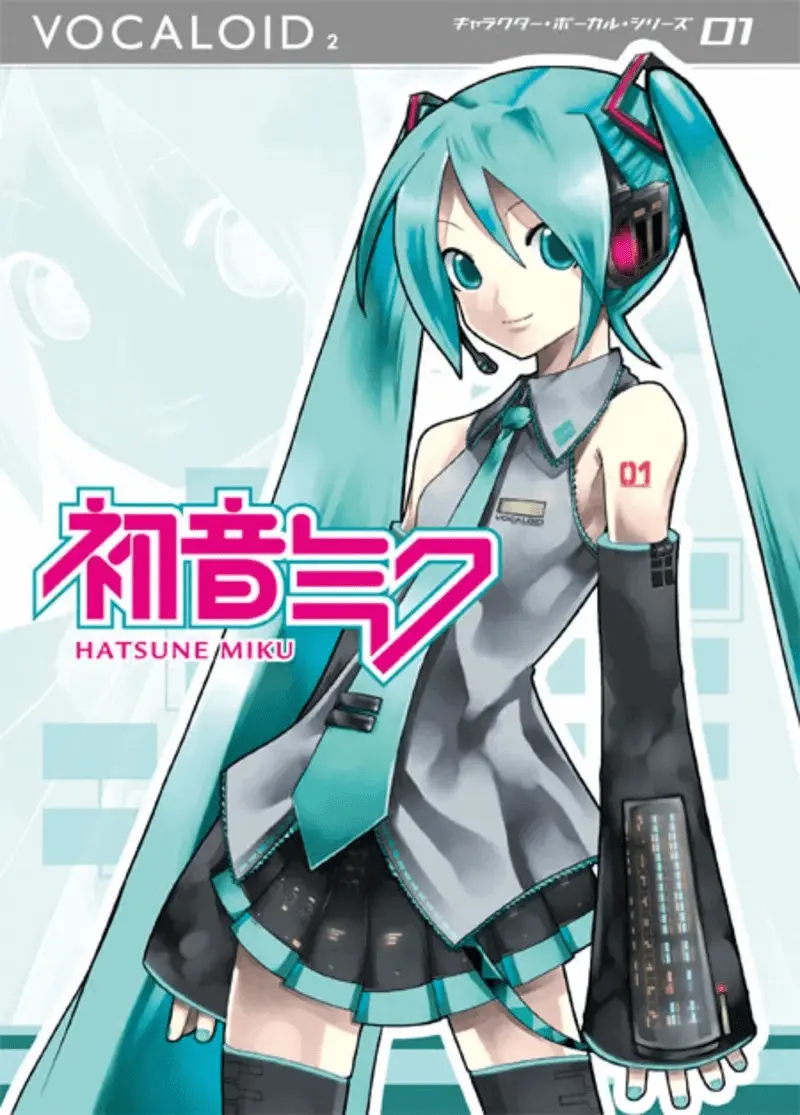
The resurgence in Frutiger Aero's popularity in the early 2020s led many musical artists to release work inspired by the aesthetic.
More Images - Gallery
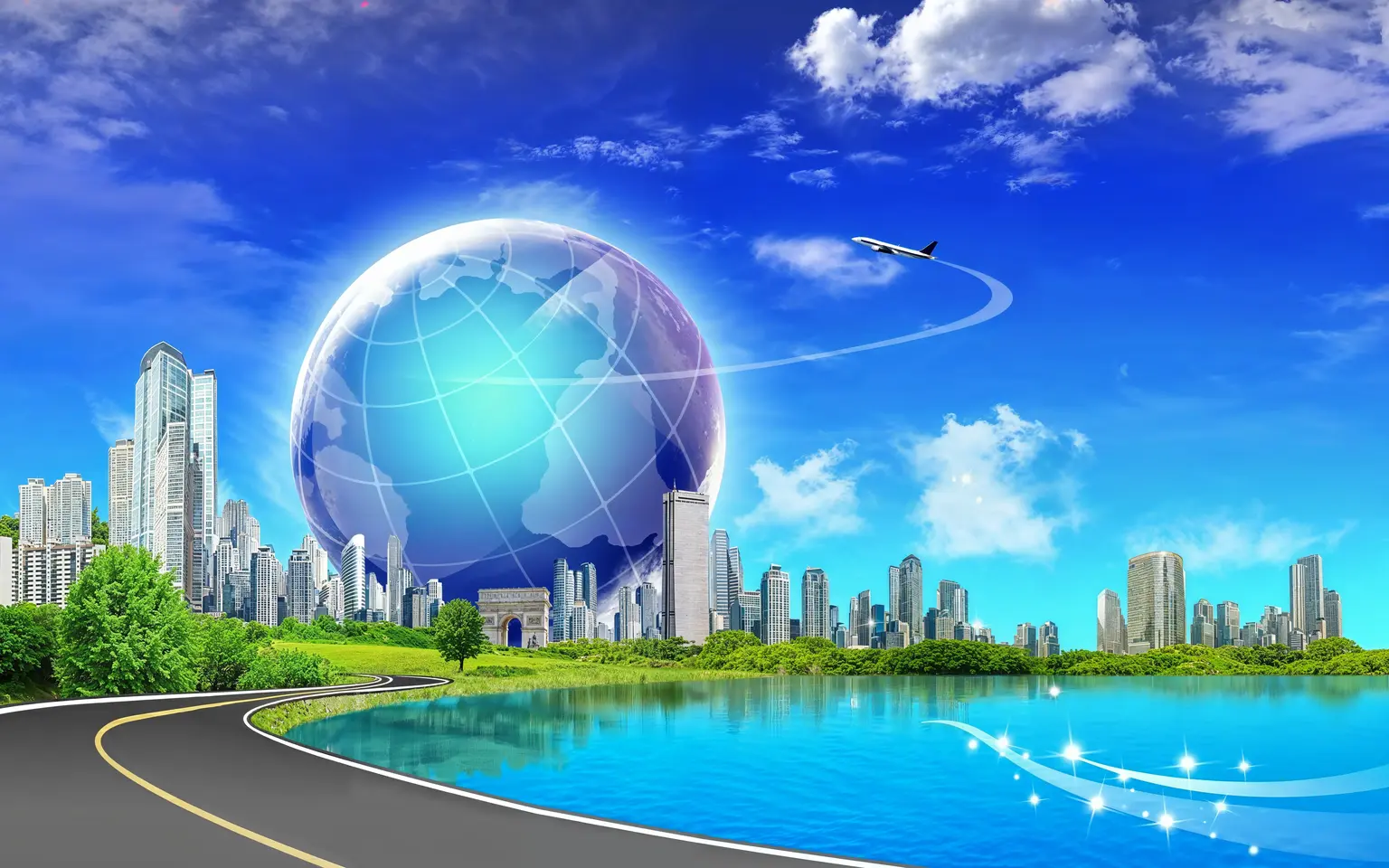
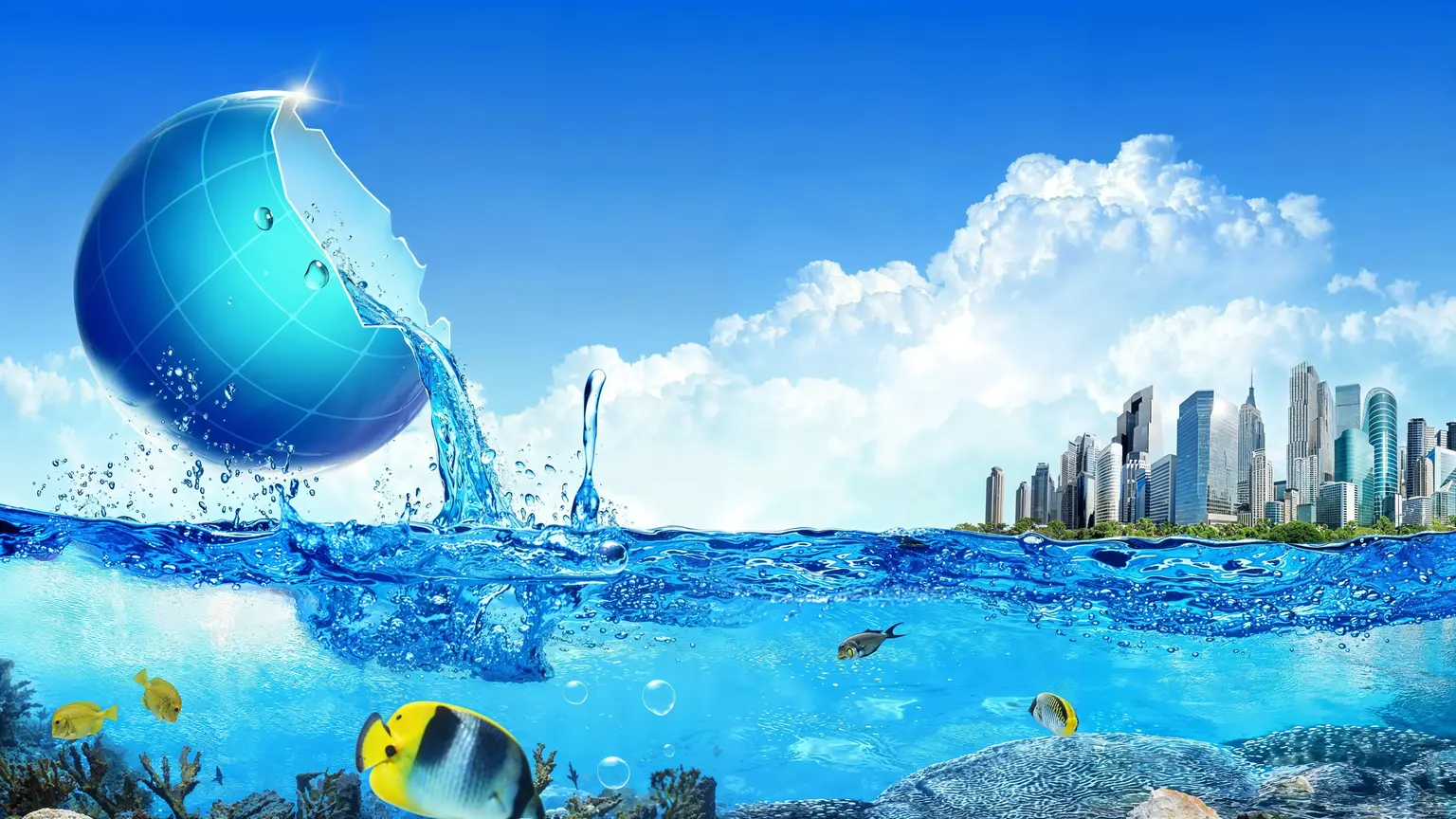

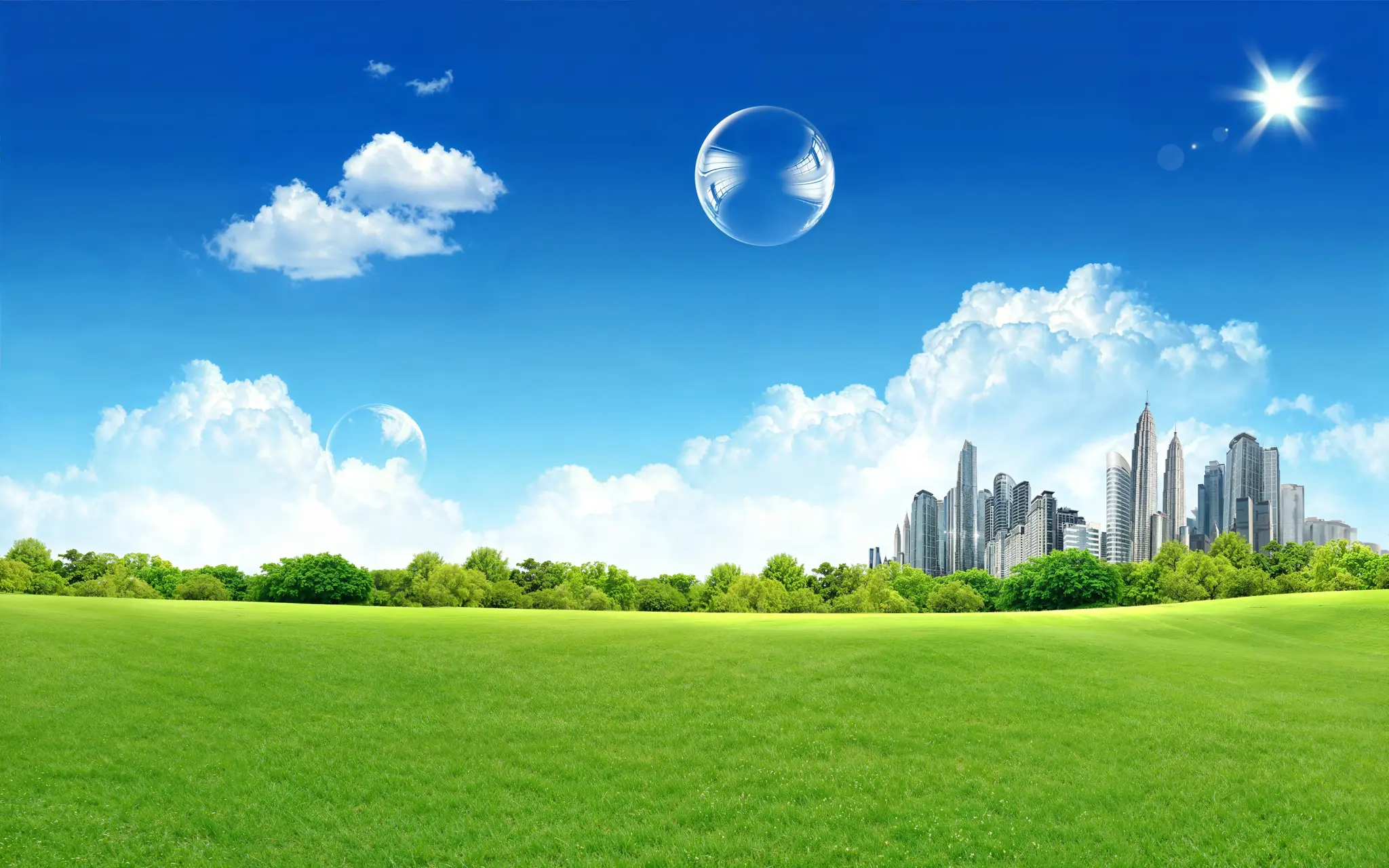
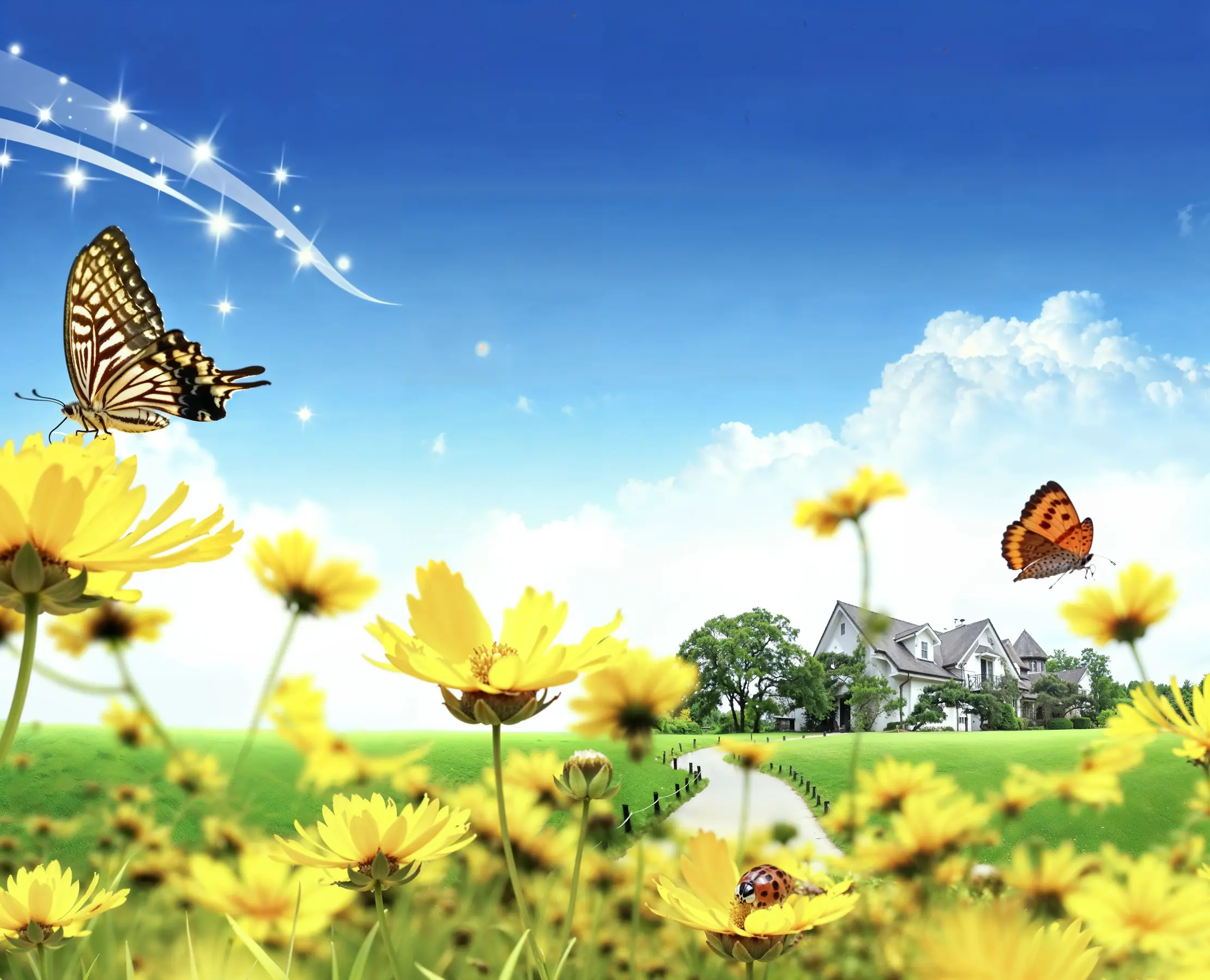

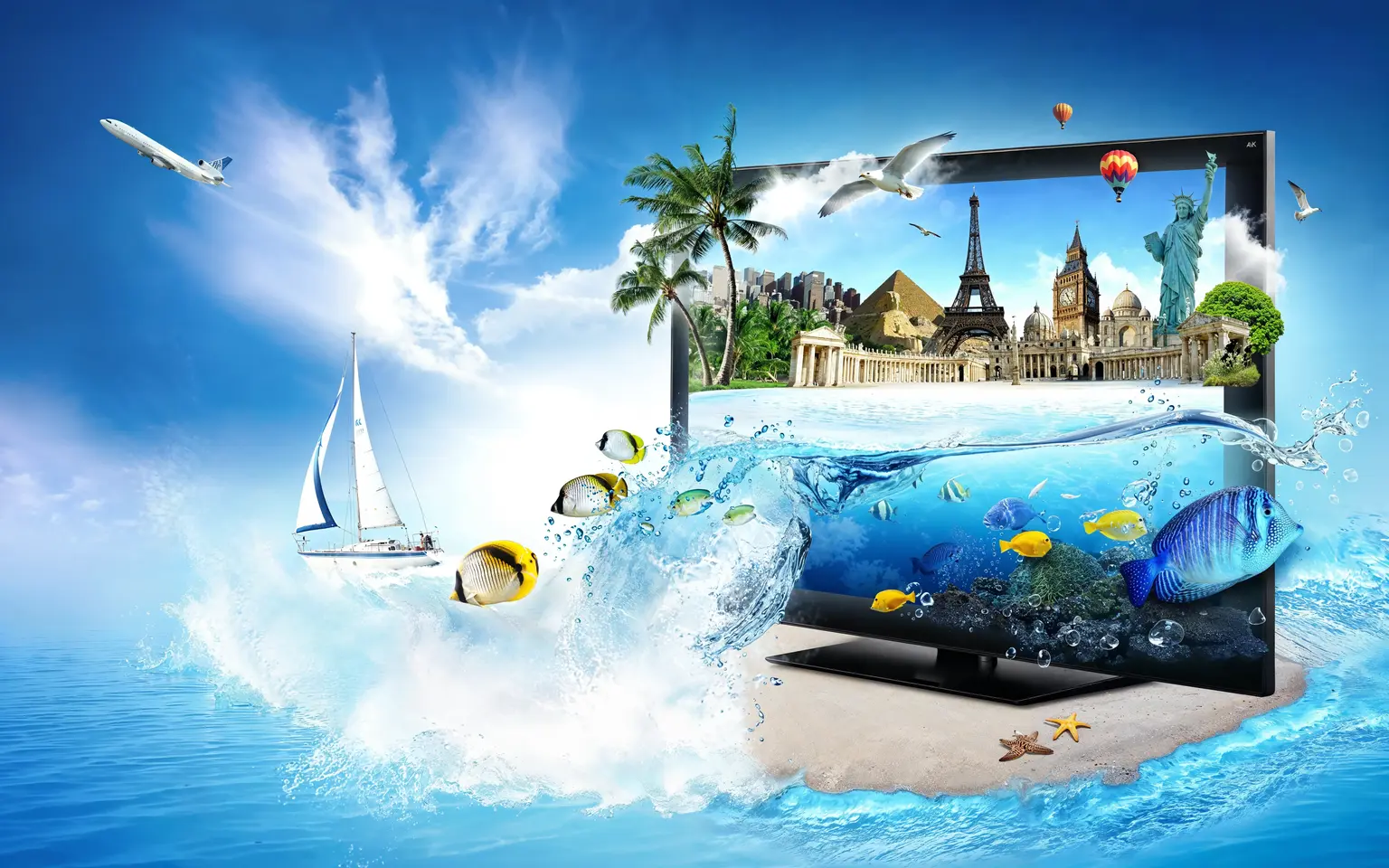
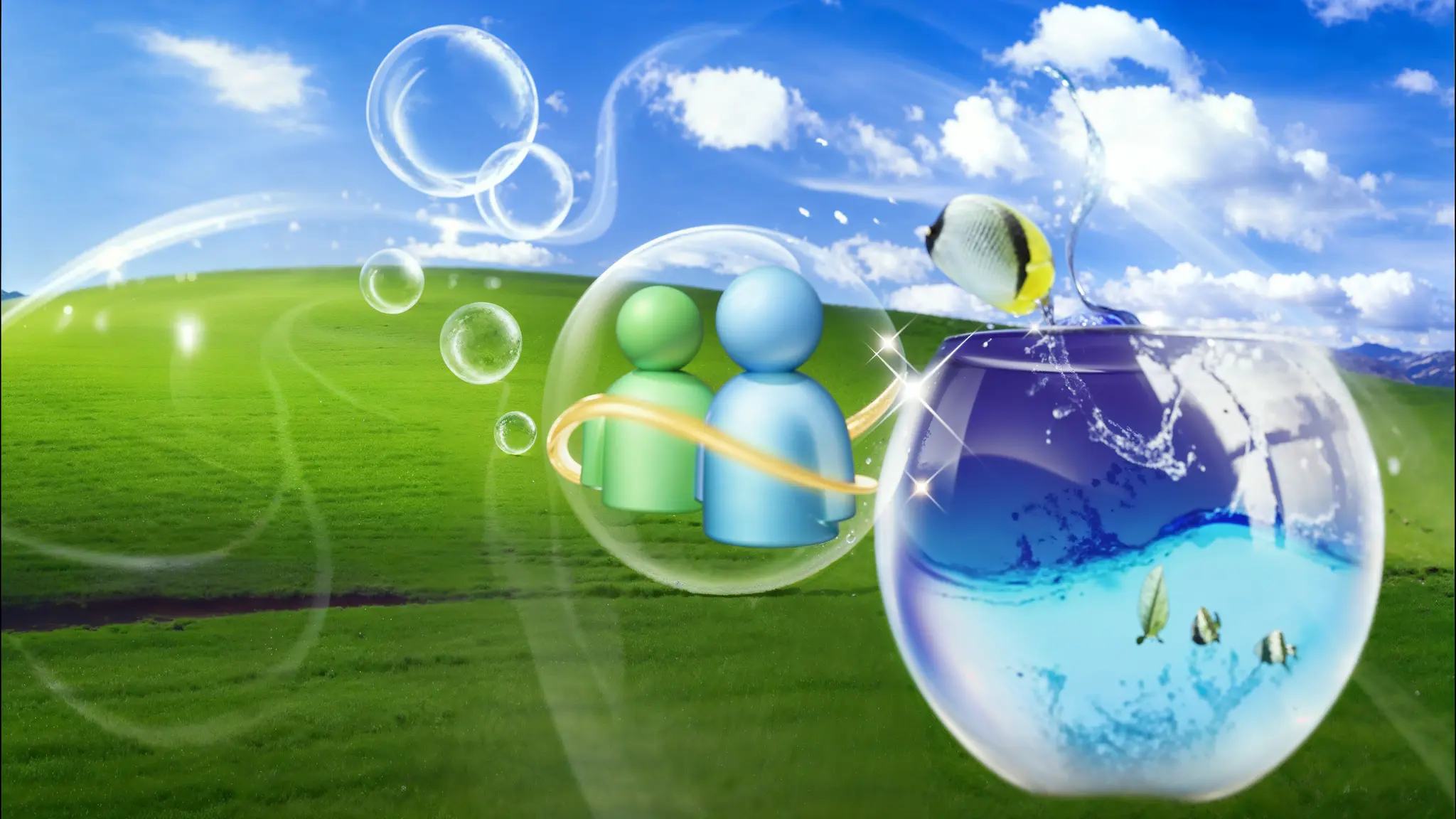
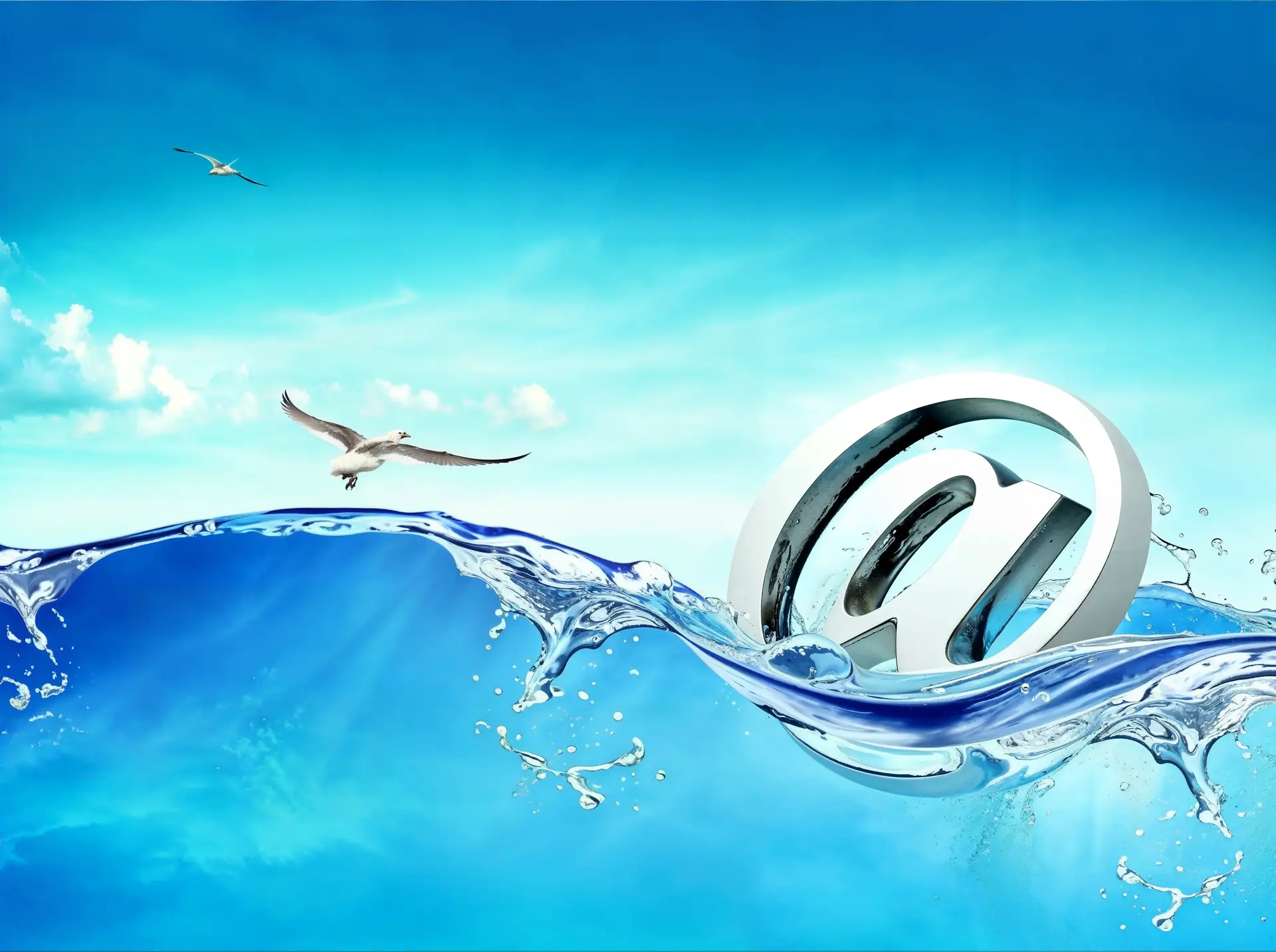

 What is Frutiger Aero?
What is Frutiger Aero?